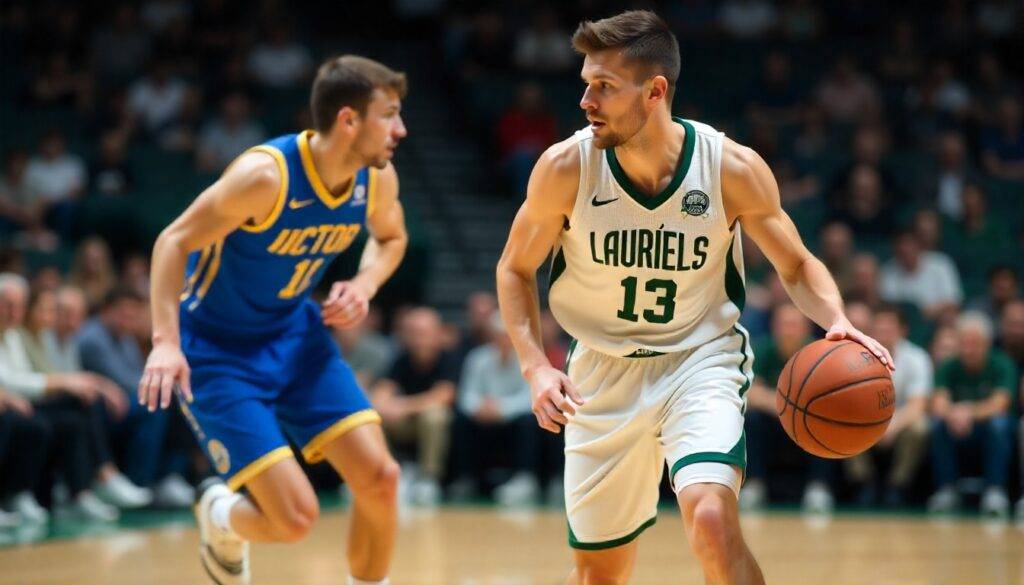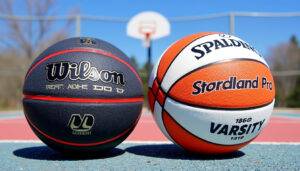Biota Basketball Player's Secret Training Routine Revealed

Biota Basketball Player's Secret Training Routine Revealed peels back the curtain on a program built from repetition, smart recovery, and modern sports science. What looks effortless on game day is the result of a daily grind that blends old-school sweat with 2025 innovations — from targeted strength work to tech-assisted skill sessions. This piece follows a fictional pro, Biota, to show how habits translate into elite performance, giving concrete drills, recovery tools, and mental strategies you can adopt.
Read on to see how a player balances intense practice, recovery protocols, and life off the court. Expect actionable routines, a taste of the tech and gear shaping training today, and the mindset that carries players through long seasons.
Biota's Morning Rituals and Daily Routine for Elite Basketball Performance
Before practice, Biota treats the morning like the foundation of the whole day. Waking up early is non-negotiable; that extra hour gives time for hydration, a purposeful breakfast, and a progressive warm-up. Early starts aren’t glamorous, but they build consistency — the kind of day-to-day reliability that compounds into elite results over months and seasons.
Here’s what a focused morning looks like in practice:
- Hydrate and refuel: 16–24 oz of water, a light electrolyte mix, and a balanced breakfast with whole grains and lean protein.
- Breathwork and visualization: 5–10 minutes of controlled breathing followed by a short visualization of specific game actions.
- Dynamic warm-up: mobility chains, banded activation for hips and shoulders, and progressive sprint drills to prime the nervous system.
Nutrition is targeted: complex carbs early for practice, lean proteins for recovery, and fats to support long-term energy. Players in 2025 increasingly pair that with personalized supplementation and gut-focused nutrition plans reflecting the latest sports science. For a deeper dive into how strength programming supports these mornings, check the practical breakdown of how strength and conditioning elevates a basketball player's performance.
Small equipment choices matter too. Biota alternates between balls that feel different in hand to sharpen touch; understanding how ball design affects handling is useful — compare ball bounce and grip in guides like the Nike vs Wilson basketball rebounds piece and the comparison of classic indoor models like Wilson Evolution vs Evo NXT. These details sharpen sensory memory during morning reps.
Morning routines also include accountability: short, logged notes in a training journal about sleep quality, soreness, and focus. That small habit helps coaches and players make smart adjustments. Final insight: treat the morning like a compounding asset — invest early, and returns show up on the scoreboard.
Secret Practice Sessions, Skill Work, and Strength Blocks That Made Biota an NBA-Caliber Player
On-court sessions are where reputation is forged. Biota splits time deliberately between high-volume skill work and game-speed simulations. The secret is not always more hours, but smarter reps: mixing purposeful isolation work with competitive scrimmages and film-driven adjustments.
Key practice components include:
- Shooting cycles: short blocks of 30 makes from multiple spots under timed conditions to build pressure tolerance.
- Ball-handling intensity: progressive difficulty using resistant balls, unstable surfaces, and defensive pressure to speed decision-making.
- Game-scenario reps: 2-on-2 and 4-on-4 segments that force reads, spacing, and finishing through contact.
Strength sessions are programmed to complement skill work. Biota's coach follows periodized blocks: power and explosiveness in the morning, maintenance and mobility later in the week. Plyometrics and Olympic lifts boost vertical and first-step quickness. These routines are aligned with modern trends like wearable monitoring and movement screens to reduce risk and sharpen gains.
Technology now enhances skill acquisition. Biota spends session time with augmented practice tools, blending real drills with VR and AR overlays that recreate opponent tendencies. Teams and players are reading the playbook of immersion tech; see practical examples in how VR and AR are changing training and fan engagement in recent analysis here.
Practice choices often reflect scouting intel gathered at events like media and team days. When Biota prepares for a matchup, film study highlights tendencies revealed during pre-season events; I’ve used similar briefs since my NBA days — they shave off reaction time in live play. For context-worthy events and insights, explore coverage from NBA Media Day and deeper player insights at NBA Media Day: Stars & Insights.
Practical example: a mid-season tweak increased Biota’s pull-up accuracy by 12% after replacing static shooting drills with game-speed, defender-simulated sequences. That kind of focused change — measurable and repeatable — is the hallmark of elite practice. Last thought: practice smart, track progress, and let the data steer the next session.
Recovery, Mental Preparation, and Life Balance: The Hidden Pillars of Biota's Training Routine
Recovery and mental prep are where championships are often won. For Biota, rest isn't passive; it's an active, planned process. Sleep, targeted nutrition, and smart recovery tools are scheduled as intentionally as workouts. Players in 2025 are more precise than ever about these windows, using data from wearables and staff to time interventions.
Core recovery elements include:
- Sleep hygiene: consistent bedtimes, sleep environment control, and naps after heavy sessions to support tissue repair.
- Active recovery: foam rolling, light bike sessions, and mobility flows to maintain range of motion without adding fatigue.
- Therapeutic modalities: contrast baths, targeted compression, and hands-on physio to address soreness and preempt injury.
When injuries do happen, targeted rehab beats vague rest. Biota’s staff references case studies and protocols — including advanced rehab approaches for ligament concerns — to accelerate safe returns. For example, detailed rehab frameworks and surgical return-to-play strategies like those outlined in specialized pieces help teams and players manage setbacks such as UCL or ACL issues; see applied rehab strategies documented in resources about training after an injury like the McCain UCL tear training write-up.
Mental preparation pairs with physical recovery. Visualization, structured film study, and mindfulness routines sharpen decision-making under pressure. Biota's weekly schedule includes focused visualization sessions that map common late-clock plays and defensive stunts, turning anxiety into rehearsal. Film analysis — breaking down both team tendencies and personal footage — ensures every practice rep targets a real in-game adjustment. For context on competitive placement and weekly focuses, teams reference updated rankings and camp reports such as the NBA 2025 player rankings and training camp breakdowns at NBA team rankings: training camp.
Outside the court, maintaining relationships, hobbies, and community work keeps perspective. Biota spends off-days with family and a recreational hobby to recharge mentally. That balance reduces burnout and keeps the competitive fire honest. Final insight: recovery and mental work are investments that protect the body and amplify the value of every on-court minute.
